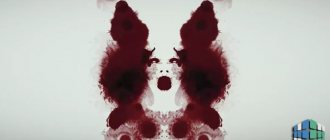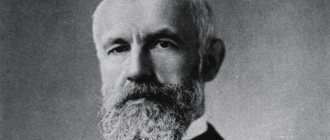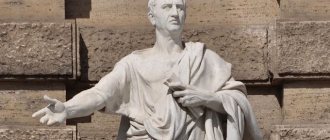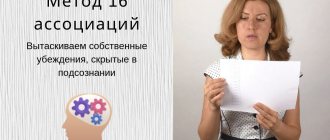The free association method has been widely used in psychology for quite some time. Its author is one of the most famous and scandalous psychoanalysts in history, Sigmund Freud. It was he who proposed this method and used it throughout his career, passed it on to his students and included it in the so-called psychoanalysis, thanks to which he gained his fame. If you want to learn more about the free association method, what it is and what it is used for, then this article is for you.
Sigmund Freud
If we talk about the method of free association, then it is necessary to mention the one who introduced this method, namely Sigmund Freud. He lived and worked in the second half of the nineteenth and the first half of the twentieth century. He was born in the Austrian Empire in the city of Freiberg, which currently belongs to the Czech Republic. He made enormous contributions to psychology, and his works are still used and appreciated, studied in universities and put into practice, although not as actively as before. He founded a three-component structure of the psyche, introducing the concepts of “I”, “it” and “super-ego”. It was Freud who told the world about the psychosexual phases of human development, he described the protective mechanisms of the human psyche and much more, which as a result developed into a full-fledged psychological and psychiatric direction, which was called “Freudianism.” And it is within the framework of Freudianism that there is so-called psychoanalysis, which shook the world of psychology and psychiatry in its time. Its key component is the method of free association, so we cannot talk about it without talking directly about psychoanalysis as a whole.
Freud's theory of psychoanalysis: briefly
According to Freud's theory, the human psyche can be “divided” into the following components: Ego, Id and Superego.
Definition of terms:
- The id is the main source of drive and desire. As an analogy, we can cite an ordinary street dog, where all its actions, such as mating, sleeping, etc., are the result of instincts inherent in nature.
- The ego is a mediator that divides social frameworks and animal instincts. The part of the personality that satisfies the needs of the id, taking into account the limitations of the external world.
- The superego implies all social frameworks, starting with the period of parental education, when the foundations are laid for what can be done and what is unacceptable. In adult life, it is reflected in all aspects of life, such as morality, religion, law.
The topical model of the mental apparatus includes two elements: the unconscious and the conscious.
What do they mean:
- The unconscious is psychic forces that are below the level of consciousness. They determine how a person behaves.
- Conscious is a mental aspect that an individual is able to become aware of. Consciousness has a direct impact on how an individual positions himself in society. The psyche can automatically be corrected by the pleasure principle. If the balance is disturbed, then a reset occurs through the unconscious sphere.
Defense mechanisms realize the conflict between the Superego and the Id. Freud described many of them: isolation, projection, repression, denial, substitution, regression and so on.
What is psychoanalysis?
So, what place does the method of free association have in psychoanalysis? Freud based his work precisely on this method. Therefore, we can safely say that it is fundamental to psychoanalysis.
Psychoanalysis is a branch of psychology founded by Sigmund Freud. He believed that every person’s psyche is divided into conscious and unconscious. And psychoanalysis, unlike all other directions, was focused on working with the unconscious. This meant that studying the patient’s situation, helping him, and treating him were carried out using not the most traditional methods, which even included the interpretation of dreams. Over time, naturally, these methods became generally accepted, and the method of free association, examples of which will be discussed below, generally became one of the leading ones in psychology and psychiatry.
What is this method?
The method of free association in psychoanalysis, as you already understand, occupies a leading place and plays a vital role. But what is he? As mentioned earlier, Freud's psychoanalysis is aimed at the unconscious in the human psyche, and it is on the basis of this that this method works. Its essence lies in the fact that the psychoanalyst does not try to work with the patient’s rational thoughts and ideas, he tries to get to the very depths, to what the person’s consciousness is trying to hide from everyone around him and even from himself. But how exactly does it work? How to get to that hidden place in the human psyche? The free word association method is an ideal tool for getting exactly what the psychoanalyst needs.
A little about the history of the method
The English psychologist Francis Galton first tried to conduct an association experiment in 1879. Then he selected 75 words and wrote them on separate cards. After that, he took one card and looked at it. He wrote down the thoughts that arose while looking at each word. He refused to subsequently publish the results, but concluded that the associations reflect the essence of a person’s thoughts very clearly and accurately.
Later, the method began to be actively used primarily in psychology, in particular in psychoanalysis, the author of which was the famous psychiatrist Sigmund Freud. The scientist used the method for many years, and it was thanks to him that it became so widespread and gained popularity.
Sigmund Freud was an Austrian psychiatrist, psychologist, psychoanalyst and neurologist. The founder of psychoanalysis, which had a serious influence on psychology, anthropology, sociology, medicine and even literature and art of the 20th century. Developer of a three-component structural model of the psyche. Freud's ideas were revolutionary for his time and resonated in scientific circles, and interest in them has not exhausted itself even today.
How is this method carried out?
So, the essence of the method is that the psychoanalyst allows his patient to say absolutely everything that comes to his mind. He doesn't ask leading questions or try to find out anything specific. He does not ask to restrain any emotions - the patient can and should tell everything that comes to his mind, even the most indecent and vulgar things. The job of a psychoanalyst is to listen to the patient, write down everything that pours out of the patient’s mouth in a stream of consciousness, and then justify the name of his profession, that is, analyze the information received. At first glance, this may seem a little absurd - what can be learned from a stream of words that is not limited by anything? However, in reality, everything is not as simple as it might seem. Freud would not have become so famous if it were just a stream of consciousness and not something more.
Memory training>Association method
The association method is the first and main method of memory development
, which must be mastered, since it is not only functional in itself, but
is also an integral part of most methods of effective memorization.
Without this method, it is impossible to imagine any memorization technique, just as it is impossible to imagine mathematics without numbers.
What is an association? Association
- in a broad sense, this
is associating something with something
.
That is, an association is a connection between two or more phenomena (objects, sensations, ideas, words, etc.) in which the actualization of one of them entails the appearance of another.
So, for example, when you see a person walking with skis, you remember winter (in other words, skis are associated with winter), and when you are asked what summer is associated with, you will most likely say that it is with the sun. And yet the associations vary greatly from person to person.
If you ask several people to answer the word “red” with the first word that comes to mind (in other words, ask which word is associated
he has the word “red”), you can get the following answers: “poppy”, “flag”, “tomato”, “black”, etc. Such differences depend primarily on the individual experience of each person. The associations described above are called free; they are already formed in your mind. And to master the method of associations itself, you will need to learn how to create new associations (or connections) between any elements (words, numbers, symbols, etc.).
In fact, creating memory associations is an art. The famous American psychologist and philosopher William James (1842-1910) noted: “The art of good memory is the art of creating numerous and varied connections with any information that we want to remember...” And all other researchers of human memory reserves unconditionally agree with him. In order for associations to help you more effectively, you must first learn several rules for creating or constructing them.
Rule #1. Associations must be unusual, non-standard, incredible.
The more banal and boring your associations are, the less likely they are to help effectively. On the contrary, the more unconventional and perhaps even more absurd the connection between elements, the stronger it is. It's even better if your associations are funny and absurd. It is not for nothing that in a series of changing days we cannot remember the Tuesday before last, but we clearly remember holidays, birthdays ten years ago, that is, everything that somehow goes beyond the category of everyday life.
And even during the holidays, again and again we turn in our memories to those who were distinguished by some unusual incident. This is the property of our memory: it is best to capture everything that is most vivid, unusual and exciting.
So, when combining two elements, try to come up with the most incredible and strange combination, and you will see that it will affect the memorization process in the most positive way.
Creating associations is always individual
, and therefore the reader should treat the examples given below only as illustrations, and not at all as the only possible and correct construction of associations. In order to master the method of associations, you must first learn how to connect any two words with each other, and learn how to create connections that are unusual, unexpected, non-standard, funny.
Let's try, for example, to connect the word “orange” and the word “soap” in several ways. I really hope that you have learned Rule No. 1 and immediately refuse connections like this: “I bought an orange and soap.” This is an enumeration connection and is easily forgotten. It’s much better if the connection is like this: “I started peeling an orange, and there (instead of juicy pulp) there was a piece of soap.”
You should not be embarrassed by the strangeness or unreality of the connection you created - because, as you know, these are the things that are remembered best. Here's another way to create a connection between these words: "I draw an orange with a bar of soap." The connection could be like this: “I imagine that I bite into an orange, and it turns into soap in my mouth.” Now come up with 2-3 more original connections (associations) between the words “orange” and “soap” yourself.
Let's try to connect the words “tree” and “TV”. Naturally, the “tree is shown on TV” connection does not suit us. It will be forgotten as quickly as it arose. “A TV hanging on a tree” is better, but even better, even more unusual, would be to imagine that many small TVs are hanging on a tree (like leaves or fruits).
“The TV is built into a tree trunk” is also not bad. But the connection: “When you turn on the TV, a tree begins to grow from it,” is, in my opinion, the most successful of those listed. My opinion will become clearer to you when you become familiar with the rest of the rules for building associations for memorization.
At first, building such connections seems very, very strange, sometimes almost delusional, but you must not forget that learning to build such connections is simply necessary for mastering most methods of effective memorization. Try to come up with a few more significantly different connections between the words “TV” and “tree.” The more original connections you can create between these words, the better.
By the way, this is how a person’s creative abilities are tested. The more original and essentially different connections a person can create (and not “the tree came out from above ...”, “the tree came out from the side ... or from below”), the higher his creative potential. Therefore, building new connections between words is doubly useful.
*** Exercise 1.
Practice on your own: come up with associative connections for the words:
GLASS and SHOES PENCIL and HAT PHONE and WATERMELON
For each pair, come up with 3-4 connections, not forgetting Rule No. 1.
In the Appendix you will find
a few more pairs of words for self-practice. It’s even more difficult to come up with connections between words that simply suggest standard associations. In these cases, you need to be able to come up with other associations and build new connections.
For the development of memory, learning to avoid stereotypical connections that are firmly rooted in personal experience is especially important. It is important because the largest number of errors occurs precisely when reproducing words, between which a standard logical connection arises in itself.
For example, between the words “grass-flower” and “cat-mouse” the following connections suggest themselves: “a flower grows in the grass” and, accordingly, “the cat caught the mouse.” Such connections are forgotten, like everything ordinary. This happens because people trust such a connection fixed in experience and do not approach creating an association creatively. This happens especially often when memorizing not just two, but a whole chain of elements.
Let's try to come up with something new for the words “pillow” and “blanket”. It's more complicated than for the words "orange" and "soap", isn't it? And yet, in order to master the methods of memory development well, one must learn to move away from familiar connections and break habitual stereotypes. Here are some examples of original connections between these words
“The pillow is sewn (stuck) to a feather fell out of the pillow and turned into a blanket.” “The pillow burst and turned into a blanket.” “They put a pillow on their head and wrapped themselves in a blanket.”
*** Exercise 2.
Practice making unexpected connections between words:
WATER and FLOWER CAT and MILK ENVELOPE and PEN
Come up with 3-4 original connections between the words of each pair.
Of course, the most logical thing would be to connect “cat” and “milk” like this: “The cat drinks milk,” but if you really want the association method to bring you maximum benefit in the future, then show more imagination and come up with something more interesting. For example, at least this: “The cat swims in milk.” A few more pairs of words, the usual connections between which need to be changed to new ones, can be found in the Appendix
.
Rule #2. Represent your associations visually.
When the association is ready, you need to imagine it, draw a visual picture, “revive” the plot that you came up with.
Otherwise, this rule is called REVIVAL METHOD
. This simple method will help you consolidate the connection that was born in your memory. Try to imagine your story as a still from a movie or cartoon. At first you may need to close your eyes for a while, but with a little practice you will be able to see pictures with your eyes open.
Rule #3. Exaggerate your associations.
Information will be retained more firmly if you imagine objects of unnatural sizes, for example, huge, much larger than they really are. So, when you need to remember the word “butter,” imagine a huge stick of butter, the size of a residential building; if you remember the word “light,” then imagine a dazzlingly bright light. But you can flatten a huge elephant in your imagination, it will become unusual and funny, and, therefore, will be remembered better.
Rule #4. Your associations must move.
Memorization will be even more effective if, by combining objects, you make them move, that is, perform some actions. Movement will help you imagine the plot more vividly and vividly. By creating connections between objects, make them fall, burn, break, fly, fall through, explode, jump, etc.
Try to avoid the verb “was” in your stories; use brighter verbs. And the more visual the action through which the transition from one word to another is carried out, the better the memorization result. When mastering a long list, try to ensure that each element becomes a kind of actor, that is, it performs the action itself, and is not just the object of the influence of the previous element of the list.
*** Exercise 3.
Now that you are familiar with all the rules for making associations, it’s time to practice some more. It’s good if when making associations you remember all 4 rules. Link words using the word association method:
JACKET and EAR LIGHT BULB and FAN BALL and CUTLETE SALUTE and MUSHROOM PAINT and STEWARDESS BINOCULARS and WASTE RADIO and ANTENNA BICYCLE and CHALK
If you have difficulty creating connections between words, ask your friends for help, or even better, your children, because they are masters of imagination. Listen to what connections they come up with, and gradually you will learn to quickly create unusual associations, the main thing is more fantasy and imagination.
By the way, let me remind you that the ability to connect a wide variety of words is useful not only for the development of memory, but also for the development of creative abilities. Therefore, take your time and pay more attention to this activity.
The famous Italian children's writer Gianni Rodari not only created on the basis of this very innocent activity an entire method for developing creative abilities in children, but also came up with a wonderful name for it - “fantasy binomial”. In his book “The Grammar of Fantasy. Introduction to the Art of Inventing Stories" you will find not only many examples of how an amazing story is born from two seemingly incompatible words, but also specific methods for connecting these different words, that is, methods for finding the very connection between words that you are looking for You may have already wasted a lot of time.
However, it is not enough to know how to build a connection between concepts or objects designated by words; it is necessary to acquire practical experience in this useful matter. You can do this anytime, in any minute free from mental activity: at home, in transport, in line, etc. During the day we always have minutes that we waste, so it’s better to use them for the good of the cause. For example, why don't you try to come up with connections between two random objects that you came across on the way from your bed to the bathroom?
The next day, try to tie them again, but this time in a different way. And then, perhaps, it will be possible to come up with a third and fourth communication option. Or you can choose two other items. All the same, these seconds are not occupied by anything. Why not do exercises for the mind, you will not dispute the fact that it is less necessary than exercises for the body. You can do this kind of mental exercise both when you are waiting for the coffee to boil, and when your partner is a little late for a meeting.
Well, now is the time to check how good connections between words you have created in Exercise No. 3. Without looking at the task (it’s better to cover it with a piece of paper), try to reproduce the second word in the pair:
Light bulb - Jacket - Cutlet - Bicycle -
Mushroom - Binoculars - Paint - Antenna -
Back to previous | Contents | To the next
Working with the unconscious
So what is the secret that makes the free association method so popular and effective? Interpreting information received from a patient is not a search for a grain of common sense in a stream of nonsense, as many seem to think. In fact, Sigmund Freud believed that every person has a division of the psyche into conscious and unconscious, and psychoanalysts until that time addressed only the conscious. This means that they asked their patients logical questions, to which they consciously gave logical answers. However, at the same time, consciousness did not allow the deepest problems to come out - no one consciously wanted to admit to them, and often could not even, because they did not suspect their existence, since consciousness reliably protected them. What is different about the free association method? The thing is that this method removed all restrictions of consciousness - the patient was forbidden to think about what he was saying, try to weigh words, filter ideas. He had to say absolutely everything that came into his head. It was due to this that the path was made to the most hidden problems in the depths of the subconscious, which the patient did not want or even could not tell his psychoanalyst when he was asked directly or indirectly, that is, turning to his conscious, and not the unconscious.
Procedure and main steps
1. Formulate and write down the problem on the board. You can select a keyword that expresses the essence of the problem. The word being improved object or keywords characteristic of the object being improved. 2. Define a list, cloud, chain of associative words and writes down all associations in a notebook or on the board. In this case, each group member creates: A) A group of words related to the stimulus keyword (3 min). b) A chain of words in which each word is an association to the previous one (3 min). 3. Consistently combine the keyword with all words, starting with those that are distant in meaning and those at the end of the series. 4. Based on the analogies created by each link and the subsequent transfer of properties, forms and operating principles from the associative object to the key one, generate new ideas and solutions. 5. Systematize and evaluate the ideas and solutions received and select the best ones.
Unfree Associations
Despite the fact that this method is called that way, Freud himself did not consider associations specifically “free”. He was of the opinion that they are all controlled by a subconscious process. And thanks to this method, the patient's consciousness can no longer contain everything that was hidden in its depths. It misses this information, since it often comes not in direct, but in symbolic form - this is where an experienced psychoanalyst comes in, who must decipher the received symbols.
Interpretation
Interpretation is no less important a tool in psychoanalysis than free association. Without it, this method will not work, since the psychoanalyst will simply be left with a stream of consciousness written down on paper. Interpretation is the process of psychoanalysis by which verbal associations are deciphered and take the form of the essence of the problem that the patient was unconsciously trying to convey. And it is then that you can work on solving it. As you can see, Freud's psychoanalysis turned out to be a real breakthrough in psychology and psychiatry, allowing people to get to the most intimate problems that they could not express consciously. Only with the help of the unconscious was it possible to get to the essence, and that is why Freud's psychoanalysis became so popular and was included in all textbooks on psychology, psychoanalysis and even psycholinguistics.
Example of using the method
So, a psychoanalysis session using the method of free association occurs as follows: the patient lies down on the couch, and the psychoanalyst sits on a chair near his head. In most cases, the patient cannot see the psychoanalyst or sees only a small part of him. This is done so that nothing distracts him from a kind of rendezvous with the unconscious. The psychoanalyst does not ask direct questions, as in a standard session - he only helps the patient to plunge into the stream of the unconscious in order to get to the core of the problem, which is hidden due to the defense mechanism of consciousness. As a result, the psychoanalyst receives information, which most often comes not in the form of direct text, but symbolically. Then he, as a professional psychoanalyst, uses his skills to read the essence of the problem in the received images and help the patient solve it.
Methodological and theoretical foundations of the method
Fundamental principles 1. The principle of universal connection , community and unity of all objects and phenomena of the world. Everything is connected to everything. Associative connections are global in nature and arise between any objects that have any common characteristics. Any word can generate in the mind a limitless system of connections and relationships. 2. The principle of universality of the basic laws and structures of creativity. Creative mechanisms and operating principles of one field of activity are transferred to another. 3. The principle of inexhaustibility and endless wealth of the world. The world is wider, richer and more diverse than we see and what it seems to us. A word - a stimulus - generates a limitless system of connections in our minds, awakening the most diverse and unexpected images. 4. The principle of pragmatism. The whole world appears as a resource: everything can be useful, we have the entire Universe at our disposal. 5. The principle of unity of the conscious and the unconscious , subconscious creative activity. Associations are ways of spontaneous generation of unconscious content, bridges, transition zones between conscious and subconscious processes. Associative thinking is carried out with disabled or delayed logical analysis.
Theoretical foundations Association is understood as a reflection in human consciousness of the relationship between objects of reality and mental ideas, concepts, sensations, perceptions, experiences, motor acts, in which one idea of an object gives rise to another, similar to it. The stimulus object for generating associations can be any objects in the surrounding world: randomly selected words, symbols, pictures, melodies. At the internal, mental level, associations are understood as connections between individual ideas, in which one of the ideas causes another, and at the psychophysiological level - as a conditioned reflex. Associations appear without active perception, spontaneously and without logical evaluation. The strength, originality and brightness of associations depends on the richness of a person’s inner world, experience, orientation and his individual characteristics. Discovery and establishment of new associative connections. In the process of the emergence of associations, extraordinary relationships are established between the object being improved or the problem being solved and randomly selected elements of the external world and the internal world, including the contents of EXPERIENCE. When discovering or creating new associative connections, the consciousness and subconscious of a person begins to generate new ideas. The very process of discovery and birth of new associative connections and finding new analogies leads to the creation of original ideas and creative solutions to the problem. Thus, the following creative chain is created: a problem or an object being improved - a word found using free associations - the discovery of a connection between the problem and this word - the creation of an analogy - the birth of an original idea. Creativity is understood as the connection of distant phenomena, concepts and meanings, types of activities, different worlds and spheres of reality. At the same time, using useful functional analogies based on the created connections, allows you to transfer operating principles, successful methods of action and methods of solving problems from familiar worlds to newly discovered ones.
Other types of free association method
However, not only Freud used this method, other scientists also used it in their practice. One of the most famous among them was Carl Gustav Jung. He also had his own psychoanalysis - now it is even customary to divide psychoanalysis into Freudian and Jungian. However, Jung used the method of free associations a little differently - he placed more emphasis on the fact that associations are free, while Freud himself recognized their lack of freedom, their subordination to the general process, and he himself concentrated directly on associations. But both of these approaches were incredibly successful and eventually became world famous.










